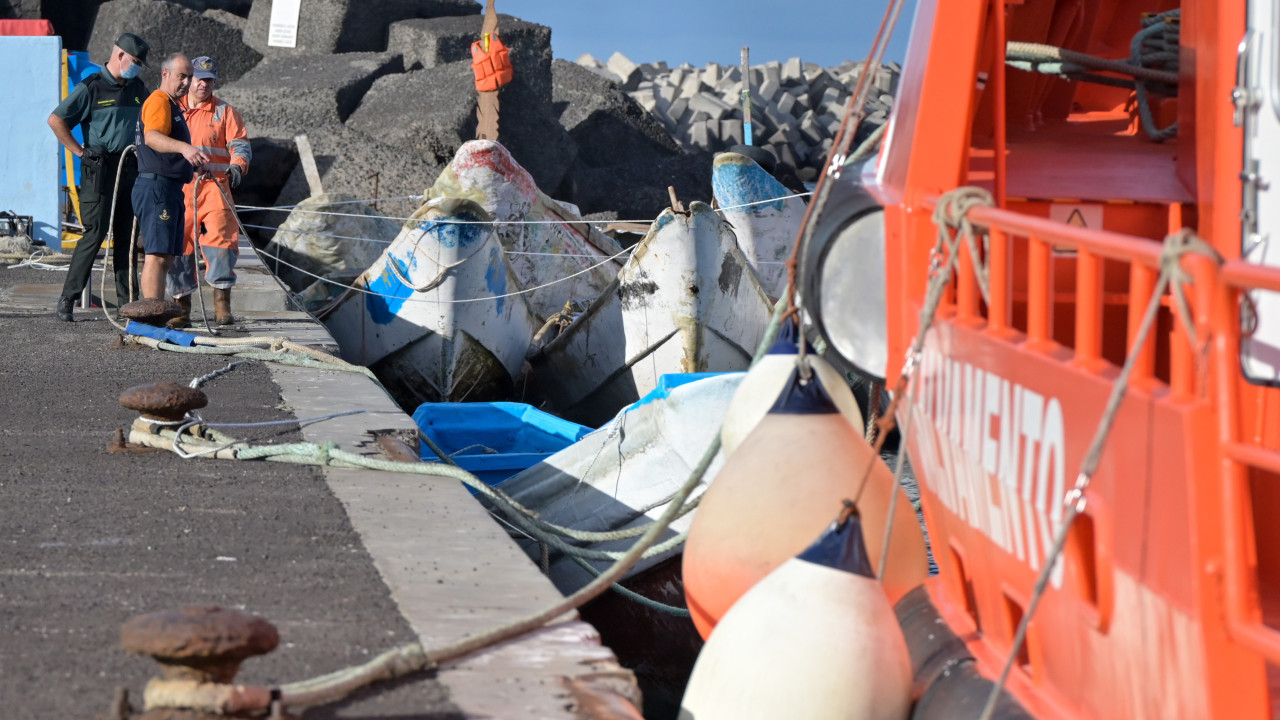
EThis non-governmental organization (NGO), which has been producing an annual report since 2007 on the people who die in the Atlantic and Mediterranean when trying to reach the Spanish coast from Africa, highlighted that 2023 was the “deadliest” year since it has records, with an average of 18 victims per day.
Last year, the NGO, which prepares reports based on official sources, organizations on the ground and migrants’ family networks, had documented 2,390 deaths and, so far, the highest number had been 4,639 victims in 2021.
In 2023, according to a report by Caminhando Fronteiras, known today, 384 of those killed were children and 363 were women.
Last year, 6,007 of the 6,618 deaths were on the so-called “Canary route”, in the Atlantic, which originates on the west African coast and in countries such as Morocco, Senegal, Mauritania and Gambia.
The NGO highlighted that this is once again “the most lethal migratory region in the world” and highlighted the case of Senegal, which “played a terrible role this year”, with 3,176 people killed at sea.
The NGO’s figures confirm an increase in precarious boats leaving with migrants from the coasts of these African countries with the aim of reaching the Canaries in the second half of last year, which the Spanish authorities have associated, among other things, with instability in the region of the Sahel.
“Despite these terrible numbers for the year 2023, States made the victims invisible with their policies and official reports focused on arrivals data [de migrantes a território espanhol]ignoring the dead and missing”, highlighted the NGO.
Caminhando Fronteiras added that the “analysis of the situation at the border by the authorities focuses more on discourses of control” and there is “no reflection on the impact that migration and border control policies have on the right to life” or about “the special situation of expulsion of people from countries that, like Senegal, are experiencing serious conflicts”.
“We must denounce that the protocols that cause death at border control are increasingly explicit, more obscene, and are repeated in the same way at all European borders”, the report reads.
“We detected that in many of the documented tragedies, search and rescue means were not activated or, if they were, it was with a significant delay that put people’s lives at risk”, added Caminhando Fronteiras.
The NGO attributed these delays in activating resources to agreements between Spain and African countries, in what it calls “externalization of borders”, with no “collaboration between countries that establishes the United Nations Convention for the protection of the right to life at sea “.
“This causes the Spanish State to press for rescues to be carried out by third countries, even when the other country does not have sufficient means, capabilities or desire to do so. The focus of this externalization is ‘migration interception’ and not ‘the rescuing people'”, highlighted the NGO, which considered that “people crossing the border are used as an instrument of negotiation in political interests between countries”.
The NGO added that Spain’s agreements with countries such as Morocco also ended up taking migrants to longer and more dangerous routes in the Atlantic.
According to official data from the Spanish authorities, between January 1 and December 15, 2023, more than 51,700 people entered Spain irregularly on precarious vessels, the highest number in the last five years.
Around 72% of migrant arrivals to Spain occurred in the Canary Islands, which welcomed 37,187 migrants, 140% more than in 2022.
Read Also: 180 migrants rescued from the sea in the Canary Islands
All News. By the Minute.
Eighth consecutive year Consumer Choice for Online Press.
Download our free App.
Source: https://www.noticiasaominuto.com/mundo/2476465/mais-de-6600-migrantes-morreram-em-2023-a-tentar-chegar-a-espanha


